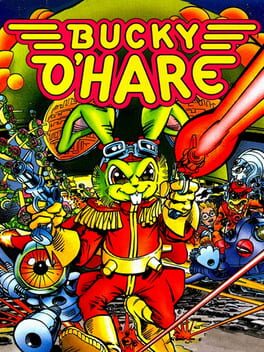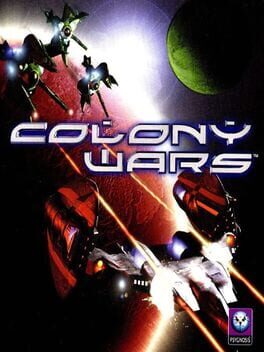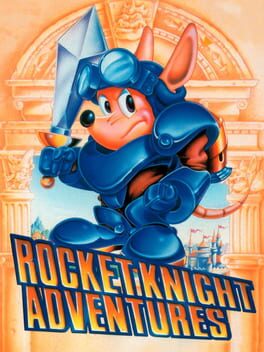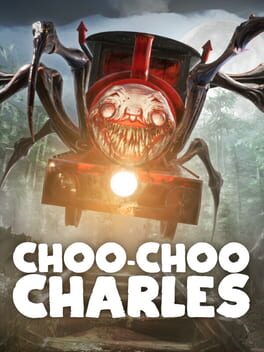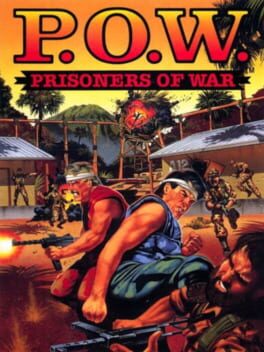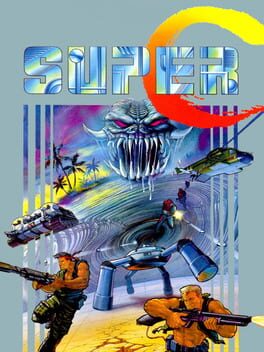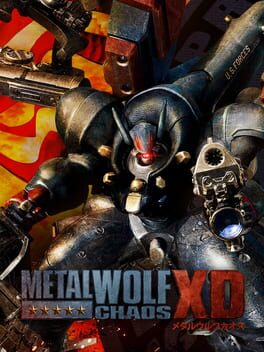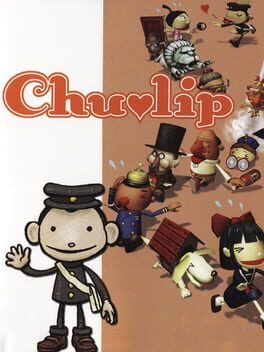TonyBlue87
BACKER
Bio
Retro streamer working on his lifelong backlog like an 8-bit Sisyphus.
Retro streamer working on his lifelong backlog like an 8-bit Sisyphus.
Badges

Liked
Gained 10+ total review likes

Roadtrip
Voted for at least 3 features on the roadmap
Favorite Games
039
Total Games Played
006
Played in 2024
529
Games Backloggd
Recently Played See More
Recently Reviewed See More
If a train leaves one station heading East at 100 MPH and an indie dev leaves another heading West, how long will it take to complete the goofiest horror adventure game of the last few years? About 3 hours, it turns out, but what a fun 3 hours it is. With completely ridiculous NPCs (Pickle Lady, my beloved), a simply rendered yet eerie forest, and a fairly unsettling horrible train monster, Choo-Choo Charles is about as close as you can get to living inside a theme park ride. Even with very simple controls of forward, backward, and brake, rolling your train along the track in search of upgrade resources and another insane-voiced quest-giver is stupidly fun in a very "Disneyland dark ride" fashion.
There is a small amount of jank here and there, the PC version is a needless resource hog, and using your weapons against Charles feels like a mere suggestion (even fully upgraded, nothing seems to deter him other than an invisible in-game timer), but it moves at such a steady pace that you tend to forgive these shortcomings. Add in the fact that dying simply resets you back at your train having lost absolutely zero progress and it's a goofy little romp that can be easily 100%'d in a single sitting.
Choo-Choo Charles also features one of the absolute best "smash to end credits" moments in any video game, period. I actually cheered when the credits rolled as a perfect button to the game's completely ridiculous ending.
Born of memes and having just enough polish, you'll have a good time with this little demon engine.
There is a small amount of jank here and there, the PC version is a needless resource hog, and using your weapons against Charles feels like a mere suggestion (even fully upgraded, nothing seems to deter him other than an invisible in-game timer), but it moves at such a steady pace that you tend to forgive these shortcomings. Add in the fact that dying simply resets you back at your train having lost absolutely zero progress and it's a goofy little romp that can be easily 100%'d in a single sitting.
Choo-Choo Charles also features one of the absolute best "smash to end credits" moments in any video game, period. I actually cheered when the credits rolled as a perfect button to the game's completely ridiculous ending.
Born of memes and having just enough polish, you'll have a good time with this little demon engine.
P.O.W. is as standard a beat em up as they come. You punch, kick, and jump-kick your way through 4-and-a-half short levels to escape from a vaguely Vietnam-coded war camp. Enemy soldiers regularly volunteer to greet you foot-to-face as you send them flying backwards with a satisfying crash sound, while other lines of enemies parade on-screen, turn around to throw a knife nowhere near you, and walk off again. You can duck into rooms or trucks in the background to fight a handful of slightly stronger enemies. Beating them rewards power-ups like punch-enhancing brass knuckles or bullet-blocking body armor. Each level ends with a boss that will either be extremely easy or extremely cheap depending on how the RNG is feeling. Rinse, repeat, escape.
There's really not much else to the experience P.O.W. offers. Environments are nicely detailed, playing on a sort of "fake 3D" incline that offers some nice perspective. The music is a real standout, providing some head-bobbing underscore as you punch your 500th identical enemy. The chance for an enemy to drop their knife or machine gun gives you the opportunity to turn their weapons against them in a very satisfying, one-hit-kill deluge of screen-clearing fire (provided you line it up properly). Combat can be challenging if enemies surround you, but 9 times out of 10 you'll be stunlocking every enemy you encounter, oftentimes catching up to 3 enemies at once in the same flurry of punches and kicks.
Being a home-version of an arcade game, there are a few cheap deaths waiting for unsuspecting players. Taking a bullet or touching an explosion is a one-hit-kill, and one boss in particular makes use of both techniques as his only 2 attacks completely at random. Enemies will sometimes spam attacks if you are standing just above or below them, so a fair amount of combat is about disengaging so enemy pathfinding forces them to break out of their animations. A sequence involving flamethrower enemies is most survivable by tying a blindfold to your face and just praying while mashing jump-kicks.
The real trouble (and it's costing this game rating an entire star) is the final boss, who is genuinely broken. This is not an issue of fight design, it's busted programming. The boss moves with you horizontally 1-to-1, matching your inputs exactly, preventing you from closing the gap without pushing him against the edge of the screen. Worse than that, though, is his attack range seems to be roughly twice the size of his sprite distance, so there's no way to know whether your position is safe in the first place. The absolute worst, however, is his attack deals damage to you before the animation plays. The boss slides up to you, you fall backwards as you lose half your health, and then you see the attack animation play. Beating him is entirely arbitrary, and ends the game on a low note when it had been a perfectly serviceable beat em up right up until that moment.
The one saving grace around these issues is the inclusion of infinite continues. Continues start you at the beginning of each level, but in the case of the final boss, it's a very short hike to get another run at his broken nonsense. In a generation of games filled with limited continues and cheap deaths, it's a shockingly refreshing and empowering inclusion, especially as the checkpoints in the final level feel extremely fair. If you manage to power through to the end and escape, then, as the game says, "congraturation!"
There's really not much else to the experience P.O.W. offers. Environments are nicely detailed, playing on a sort of "fake 3D" incline that offers some nice perspective. The music is a real standout, providing some head-bobbing underscore as you punch your 500th identical enemy. The chance for an enemy to drop their knife or machine gun gives you the opportunity to turn their weapons against them in a very satisfying, one-hit-kill deluge of screen-clearing fire (provided you line it up properly). Combat can be challenging if enemies surround you, but 9 times out of 10 you'll be stunlocking every enemy you encounter, oftentimes catching up to 3 enemies at once in the same flurry of punches and kicks.
Being a home-version of an arcade game, there are a few cheap deaths waiting for unsuspecting players. Taking a bullet or touching an explosion is a one-hit-kill, and one boss in particular makes use of both techniques as his only 2 attacks completely at random. Enemies will sometimes spam attacks if you are standing just above or below them, so a fair amount of combat is about disengaging so enemy pathfinding forces them to break out of their animations. A sequence involving flamethrower enemies is most survivable by tying a blindfold to your face and just praying while mashing jump-kicks.
The real trouble (and it's costing this game rating an entire star) is the final boss, who is genuinely broken. This is not an issue of fight design, it's busted programming. The boss moves with you horizontally 1-to-1, matching your inputs exactly, preventing you from closing the gap without pushing him against the edge of the screen. Worse than that, though, is his attack range seems to be roughly twice the size of his sprite distance, so there's no way to know whether your position is safe in the first place. The absolute worst, however, is his attack deals damage to you before the animation plays. The boss slides up to you, you fall backwards as you lose half your health, and then you see the attack animation play. Beating him is entirely arbitrary, and ends the game on a low note when it had been a perfectly serviceable beat em up right up until that moment.
The one saving grace around these issues is the inclusion of infinite continues. Continues start you at the beginning of each level, but in the case of the final boss, it's a very short hike to get another run at his broken nonsense. In a generation of games filled with limited continues and cheap deaths, it's a shockingly refreshing and empowering inclusion, especially as the checkpoints in the final level feel extremely fair. If you manage to power through to the end and escape, then, as the game says, "congraturation!"
Super C is a great follow-up to the original Contra. Everything gets an upgrade: the backgrounds and sprites are bigger and more detailed, the music gets broader range with bassy orchestra hits, and levels are given more varied layouts with vertical and horizontal traversal within the same environment. The pseudo-3D hallway crawls of the first game are replaced with far more challenging and interesting top-down levels that would later be even more intense in Contra 3. The standard run, jump, n' shoot formula is just as strong as ever, with Spread still being the "Activate Easy Mode" weapon of choice.
It's not all glorious warfare for Bill and Lance, though, as there are a few elements that hold it back from a perfect experience. Enemies love to spawn from behind you on the edge of the screen and catch you off guard. Some environmental gimmicks/mechanics can lock you in an inescapable death loop if you get an unfortunate pattern, particularly on the "downward" vertical levels with blind drops. Most unfortunate of all, however, is bosses offer practically zero challenge. Most of them are motionless (albeit impressively designed) full-screen monster towers, but only 3 out of 8 require you to do any real dodging maneuvers. One boss in particular can be beaten without moving at all, since your attacks destroy theirs. If you have Spread going into any of these fights, the bosses might as well have not even bothered showing up to work that day for how quickly they're dispatched.
Super C does exactly what you want out of a sequel: gives you a slightly better, slightly more challenging expansion of the game that came before it. Even with a few old-school game design flaws hanging about, it's still one of the absolute best action games on the NES.
It's not all glorious warfare for Bill and Lance, though, as there are a few elements that hold it back from a perfect experience. Enemies love to spawn from behind you on the edge of the screen and catch you off guard. Some environmental gimmicks/mechanics can lock you in an inescapable death loop if you get an unfortunate pattern, particularly on the "downward" vertical levels with blind drops. Most unfortunate of all, however, is bosses offer practically zero challenge. Most of them are motionless (albeit impressively designed) full-screen monster towers, but only 3 out of 8 require you to do any real dodging maneuvers. One boss in particular can be beaten without moving at all, since your attacks destroy theirs. If you have Spread going into any of these fights, the bosses might as well have not even bothered showing up to work that day for how quickly they're dispatched.
Super C does exactly what you want out of a sequel: gives you a slightly better, slightly more challenging expansion of the game that came before it. Even with a few old-school game design flaws hanging about, it's still one of the absolute best action games on the NES.
